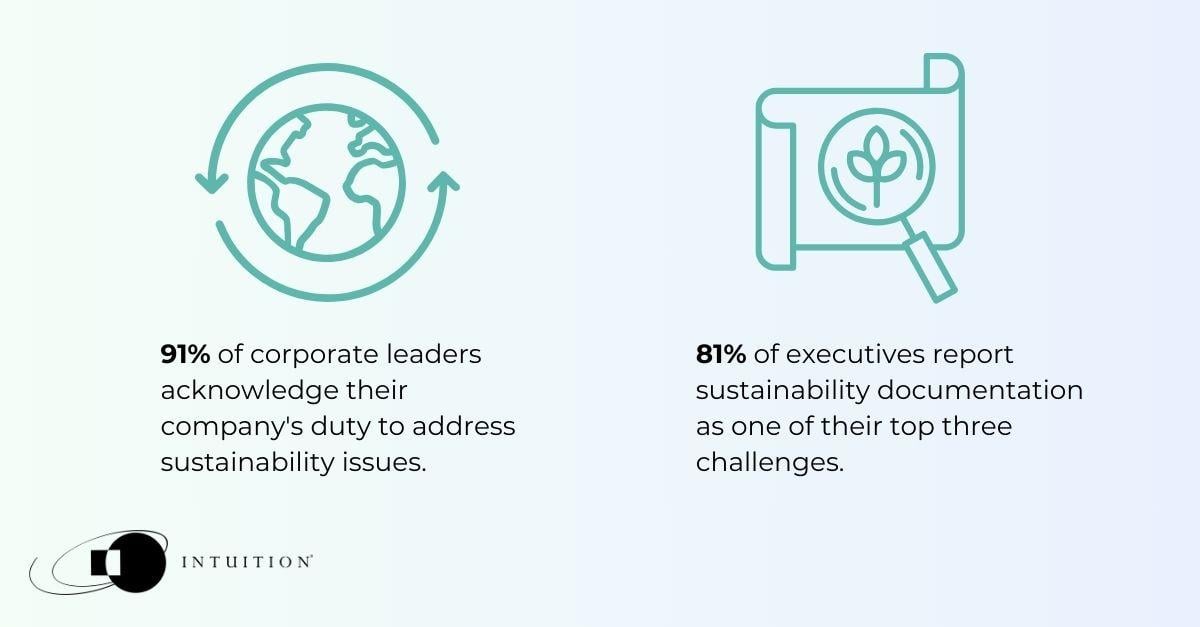
As recruitment professionals, we've seen over and over again that a great CV and cover letter can impress potential employers and do the heaving lifting for people applying for a position.
But it’s worth remembering that only 2-3% of online applicants get to the interview stage. If you really want to stand out from the crowd, a strong digital marketing portfolio will add weight to your application and give employers a great idea of your work and experience.
If you work in marketing, you’ll know the importance of showcasing a product or service – and doing the same with your own skills is no different. Creating a portfolio will demonstrate to potential clients or employers how you can apply your talent to their brand or company, and how you can solve their needs.
Compared to a mere wall of text, visual aids are said to make presentations 43% more persuasive. So, complement your job applications with an eye-catching online marketing portfolio that will impress the interviewer and get your candidature over the line.
Reasons to create a digital marketing portfolio
Portfolios are usually associated with design roles, but are equally effective in non-visual roles where you can use them to show off your expertise in other areas. Whether your specialty is social media, content or analytics, a great digital marketing portfolio will:
- Show you can do what you say on your CV
- Demonstrate the results of your efforts
- Highlight your best work
- Save time presenting work in interviews
- Prove your communication skills
Before handing over account passwords and putting you in control of their reputation, potential employers need to have confidence in you. An online marketing portfolio instils trust in your skills and experience and offers proof that you can deliver what you promise in your CV.

“Curating your online presence and developing a portfolio of your marketing work helps potential employers discover you and your work. It’s a great way to showcase your career progress, the breadth of your experience and the skills you’ve picked up.”
Gary Mullan, CEO of Prosperity
What to include in a digital marketing portfolio?
You might need to think laterally about how you present your experience. A traditional portfolio showcases the end product, but with a digital marketing portfolio you need to spell out your contribution to a process and demonstrate how you took it to a successful outcome.
Each portfolio – marketing or otherwise – is different, but they should all tell a story. Providing context around what you did on a project distinguishes portfolios from CVs, and also gives your interviewer a clear idea of what your contribution was and how you applied your skills to a particular project.
It might be helpful to think of your portfolio as a pitch, so present your work in an original way, using clear, coherent visuals and concise text. If you’re not design-orientated, a tool like Canva or EDIT.org can help you structure the information on a pre-designed template, leaving you to focus on the content.
Here’s some suggestions about what to include:
A brief bio
Start off simple with a short paragraph introducing your marketing discipline, talents and and industry experience, as well as a rundown of your skills and qualifications (where relevant). Think about your USP and expertise, and make sure it’s clear from the beginning.
At Prosperity, we recommend being as brief as possible in your bio: giving enough information to hook the potential client in without overstaying your welcome on their attention span. Take a look at these bio examples to get inspiration on what you can do.
Depending on where you are in the world, it might be worth including a picture of yourself to help create a personal link with the reader, especially if you are likely to be doing your business over Zoom or Teams.
In addition, remember that people buy from people, so personalising your portfolio according to the target employer is a great idea to help them understand how you can impact their work and get them the results they’re looking for. Focus on how you can solve their problems
Past projects
Choosing the best of your previous work is the core of any online marketing portfolio and will require some careful thought. You only want to present your best-quality and most impactful work. Again, focus on how you sorted a client’s problem and gave them tangible results.
You should choose a selection of projects – no more than six – which showcase a range of skills and experience, and you should combine visual assets with analytics as proof of their effectiveness.
The choices should address a specific problem and also demonstrate how any issues or unforeseen were dealt with – which is a key part of project management skills.
Finally, you should try and provide some sort of tangible evidence of the success of your work. Include stats on ROI, ROAS, increased revenue or efficiency to show how your efforts paid off.
In addition to ‘work projects’, don’t be afraid to feature one-off jobs, passion projects or assignments from digital marketing courses, especially if you’re starting out in digital marketing and don’t have a great deal of projects to leverage for your portfolio.
For each project you include in your portfolio, we would recommend mentioning:
The company’s name:
If you don’t have permission or have signed a NDA, describe the company in more generic terms, for example “a large B2B company”, but also include their niche, if relevant.
What you did and why:
Describe how you actively studied the company, and then detail how you tailored your research and work to meet their goals. Highlight your thoughts, approach and any marketing tools used to measure performance.
Examples:
Provide screenshots, links or mock-ups of assets like emails, social posts, whitepapers, marketing material or blog posts and SERPs - whatever is most relevant to the position you’re applying for.
Results:
Here’s the key part. Listing your output isn’t enough – a recruiter or hiring manager will want to know if your work led to increased traffic or conversions, more revenue, better ROI, etc. Make sure to show off your impact and how you could apply tailored strategies to other projects. Depending on your niche, some ideas of proof of work could include:
- Screenshots of social media posts and creatives
- Graphs showing increase in social media followers and/or engagement
- Conversion and cost reports on paid ads
- Screenshots of email mockups
- Graphs of open rates, clickthrough rates, and conversions per email, as well as subscriber growth
- Graph of organic traffic growth over time
- Screenshot of keyword strategy
Innovation:
Potential employers are always looking to be ahead of the curve and often expect their digital marketing staff to research the latest developments in the sector. Be sure to demonstrate how your solution embraced a new trend, tool or technology to get optimum results.
Data:
Add figures and graphs to clearly and concisely demonstrate your impact on the projects and effectiveness. Unless you have permission from your employer, don’t reproduce private analytics from Google. Growth percentages, rather than specific figures, say a lot without giving away sensitive information.
References
As a marketer, you’ll know the power of including reviews of a service or product, so if you have references for your skills, leverage them as much as possible.
A good reference or authoritative referral is a shortcut for employers to understand where your strengths are and how you work, and provide evidence of the quality of your work.
Include employer references, client testimonials or screenshots of LinkedIn recommendations as part of your portfolio, and make sure they are as specific as possible.
Underlining your professional credibility is a key part of convincing potential clients or employers to work with you, and references and referrals are a powerful and effective tool.
A CTA
This might seem obvious to add into the list, but as with any sort of marketing material, you should include a well-crafted CTA to get the reader to reach out to you for more information, or to find out how you can work for them.
A portfolio markets your personal brand, so show potential employers or clients you know what you’re doing by including a clear, compelling call-to-action at the end.
Creating a concise, effective CTA is key to finishing the end of your portfolio, and is the final point of the story you’re telling and what will push the reader over the line.
Contact
This is merely best practice in case your portfolio and CV become separated, so it’s always wise to include your contact details somewhere in the portfolio.
What format should you use?
A portfolio for digital marketing should be organised, scannable and easily accessible. Consider using a one-page website or a PDF for maximum ease of reading and dissemination.
Website builders are user-friendly and will demonstrate your digital marketing skills in a strong, visual way. Google Docs or Microsoft Word make it easy to tweak your digital marketing portfolio to suit the role you’re applying for, but are less easy to make visually interesting.
It's pretty likely that your portfolio will be viewed on mobile, so bear this in mind when creating the layout. It will also show that you know your stuff when it comes to mobile-first content.
Remember to save your published online work as full-page PDFs or screenshots when sending it to recruiters or your potential new employe, rather than relying on links to pages that might expire or be removed. It’s also a great idea to attach it to your LinkedIn profile for people to find it easily.
Ready for the next step in your digital marketing career? View our current roles or contact the team at Prosperity Recruitment today.




